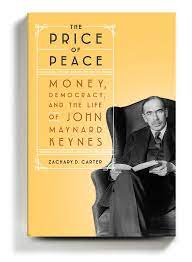 John Maynard Keynes is a somewhat awkward queer icon. In his youth he had numerous gay affairs and was a member of the Bloomsbury Group, but he ultimately married a woman: the Russian ballerina, Lydia Lopokova. Throughout his life, it would be Bloomsbury that would guide him. Bloomsbury, where he made a sport of stealing away Lytton Strachey’s many male lovers. Bloomsbury, that legendary collection of multi-talented individuals, including Strachey, Virginia Woolf, Vanessa Bell, Duncan Grant, Roger Fry and E.M Forster among others. Today some of them would be labelled gay, some bisexual. All of them were questioning.
John Maynard Keynes is a somewhat awkward queer icon. In his youth he had numerous gay affairs and was a member of the Bloomsbury Group, but he ultimately married a woman: the Russian ballerina, Lydia Lopokova. Throughout his life, it would be Bloomsbury that would guide him. Bloomsbury, where he made a sport of stealing away Lytton Strachey’s many male lovers. Bloomsbury, that legendary collection of multi-talented individuals, including Strachey, Virginia Woolf, Vanessa Bell, Duncan Grant, Roger Fry and E.M Forster among others. Today some of them would be labelled gay, some bisexual. All of them were questioning.
Queerness was an integral part of Bloomsbury. This is remarkable at a time when homosexual acts were still very much illegal in Britain–just twelve years after the conviction of Oscar Wilde. This was, of course, not widely known in Britain. The few glimpses the public had of Bloomsbury shocked and disgusted them. Women, it was reported, were addressed by their first names and expected to engage in intelligent discussions–not just small talk. Some even wore pants.
Reading of the many sexual exploits of this queerest of groups, it seems at times difficult to imagine how they all stayed together–or at least stayed in touch. But, as complicated as it could get, they had one rule: honesty. And one ethos: namely, that art is the highest of human endeavors. Keynes was an oddity in this group of artists and writers: a math major at Cambridge, an intellectual who ultimately became one of the world’s great economists. But, as Zachary Carter’s new biography, The Price of Peace, brilliantly illustrates, there is a queer logic to his involvement. For Keynes was addicted to ideas, questioned authority and had an idealistic optimism which never left him.
Keynesian can be defined in many ways, but whatever it became, it began by questioning the status quo. It was his seminal Cambridge lecture, The End of Laissez-Faire in 1924 which cracked open the door for those who questioned the common wisdom that the free market was a natural phenomenon which would somehow–almost magically–automatically correct all of its readily apparent deficiencies.
The Price of Peace isn’t just a biography of John Maynard Keynes. It is a biography of his ideas. Thus, this book takes us beyond Keynes’s death in 1946 and explores his influence on all of the US presidents up to and including Donald Trump. His analysis of George W. Bush’s stimulus package is particularly relevant today.
In these troubled times–and a new Democratic president in power–it is entirely appropriate that we, once again ask the question “What would Keynes do?” After reading this monumental book, it’s hard not to reach the conclusion: “Go Big.”
Zachary D. Carter’s The Price of Peace, Money, Democracy, and the Life of John Maynard Keynes is published by Random House.
2/4/2021